Where to See the Work of Mr. Turner Around America
The British painter is the subject of a new film, but where can you see him stateside?
The celebrated English artist J. M. W. Turner painted not only with oils and watercolors but, almost magically, with light.
Nowhere is that more easily apparent – and the contrast of his use of light and darkness more dramatic -- than from a seat on the cushioned bench at the south end of the European galleries of the Indianapolis Museum of Art. Off to the left is East Cowes Castle, The Seat of J. Nash Esq.; The Regatta Beating to Windward, a large pale, light canvas of creamy, parallel sails leaning away from the wind. Far across the galleries, against the north wall, is the even larger canvas, the dark, foreboding The Fifth Plague of Egypt, where only a flash of lightning illuminates the underside of roiling clouds and settles on one side of a pyramid. At four feet by six feet, this was the first of Turner’s large canvasses. It was first displayed in 1800 at the Royal Academy a year after the young artist was elected an Associate to the Royal Academy at the age of 24..
The historical landscape was well received, and no one seemed to mind that perhaps Turner got his biblical plagues (or titles) mixed up, that what he portrayed was actually the seventh plague described in the book of Exodus.
Joseph Mallord William Turner (1775 – 1851) is generally considered to be England’s greatest painter. Prolific and eccentric, his talent blossomed early – at first in drawings, prints and watercolors and later with oils – turbulent seascapes, dramatic landscapes. He was considered a superb colorist. Once when a critic dismissed one of his paintings as looking like a salad, he supposedly commented sarcastically, “Nice cool green, that lettuce, isn’t it? And the beetroot pretty red – not quite strong enough; and the mixture, delicate tint of yellow that. Add some mustard and you have one of my pictures.”
In his later years, the period covered by the newly released (and critically praised) movie Mr. Turner, as broad brushes of color and imagination slashed across his canvases, details grew less distinct – leading many to consider him the first of the Impressionists. Even for those who don’t see the movie, Turner’s works are obviously worth seeking out.
The museums with the two largest collections of Turner’s work are not in Manhattan or Boston, as might be expected, but at the Indianapolis Museum of Art and at the Yale Center for British Art in New Haven, Connecticut.
Which is not to say that all works in these large collections are currently on display. At Indianapolis, for instance, Martin Krause, curator of prints and drawings, says Turner’s delicate watercolors (the museum has 38 watercolors and 3,000 engravings and etchings of Turner’s in its collection) are being “given a rest” from the potential damage from of both natural and artificial light. The IMA’s rule of thumb for watercolors and drawings is “twice as long [in storage] at they’re up,” says Krause. Museum administrators say they will probably not be back on public view for several years.
The timing is also not good at Yale, where architect Louis I. Kahn’s building housing the Center (which opened to the public in 1977) is closed for conservation renovations until February 2016. In the meantime, one of Yale’s Turners, the Scottish landscape Staffa, Fingal’s Cave, which does a star turn in one of the scenes in the film, is being moved across the street to the Yale University Art Gallery. It will be part of the exhibit “The Critique of Reason: Romantic Art, 1760-1860,” at the gallery from March 6 to July 26, 2015.
However, other museums across the country also have Turners on view. More than a half-dozen museums along the East Coast have Turners currently on view, including five oil paintings at both the National Gallery of Art in Washington, D. C., and Manhattan’s Frick Collection, where the paintings are displayed in the same rooms of the Fifth Avenue mansion in which collector Henry Clay Frick originally enjoyed them.
A sampling of other museums:
· In Ohio, the Cincinnati Museum of Art currently has on display the water color Lyme Regis, Dorsetshire, England but only through February 1, because of light issues (see Indianapolis, above).
· The Taft Museum, in downtown Cincinnati, has two Turner oil canvases, the pastoral landscape The Trout Stream and Europa and the Bull, which, with its broad washes of color and, gauzy details is probably unfinished, say experts. This canvas is currently on loan to the Tate Britain in London for the exhibit that will be coming to California later this year (see below). In exchange, the Tate has sent Turner’s large oil, The Golden Bough, to the Taft for display until early August 2015.
· The Art Institute of Chicago has two Turner oils on view – the large dramatic seascape, Fishing Boats With Hucksters Bargaining for Fish, and Valle d’Aosta: Snowstorm, Avalanche and Thunderstorm, painted after Turner’s first, brief excursion onto Italian soil in 1802.
· In the Southwest, visitors to the Dallas Art Museum can see Turner’s Bonneville, Savoy, -- a gentle, pastoral scene in the foreground set against towering, sharp-peaked Alpine foothills.
But by far the largest exhibit of Turner works on display in the U.S. as Mr. Turner makes its way across the country will be in Los Angeles. The exhibit “J.M.W. Turner: Painting Set Free” has been organized by the Tate Britain in London, in association with the J. Paul Getty Museum in Los Angeles and the Fine Arts Museums of San Francisco. The exhibit, which focuses on what curators call the “especially creative and inventive” final 15 years of Turner’s life, opened in September 2014, at the Tate, which, naturally, has the world’s largest collection of Turner works. It moves to the U.S. and the Getty Center from February 24 to May 24, 2015, and up the coast to the de Young Museum in San Francisco from June 20 to September 20, 2015.
This exhibit consists of more than 60 key oil paintings and watercolors (including several on loan from American museums). Of course, for those who cannot wait until February 24, Turner’s narrative history painting Van Tromp Going About to Please His Masters, is currently on view at the Getty Center and The Grand Canal: Scene—A Street in Venice is at the Huntington Library, Art Collections and Botanical Gardens in San Marino, California, near Pasadena.
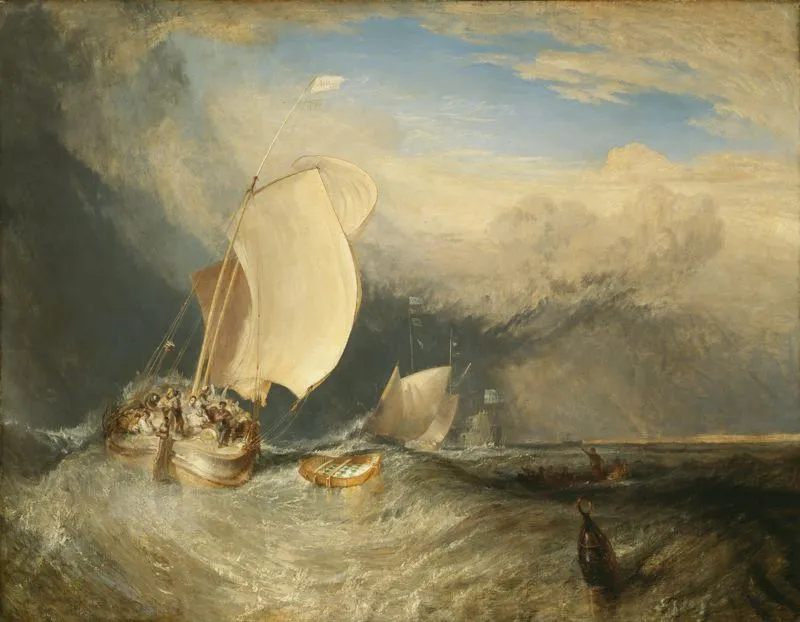
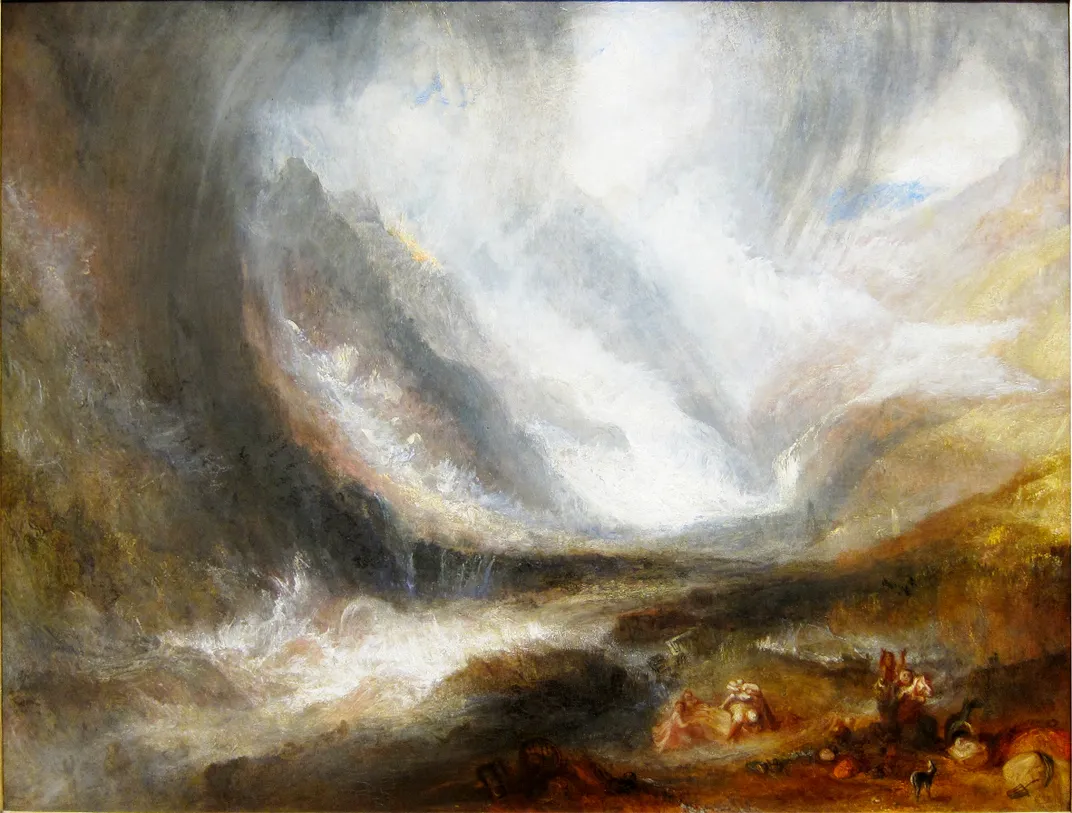
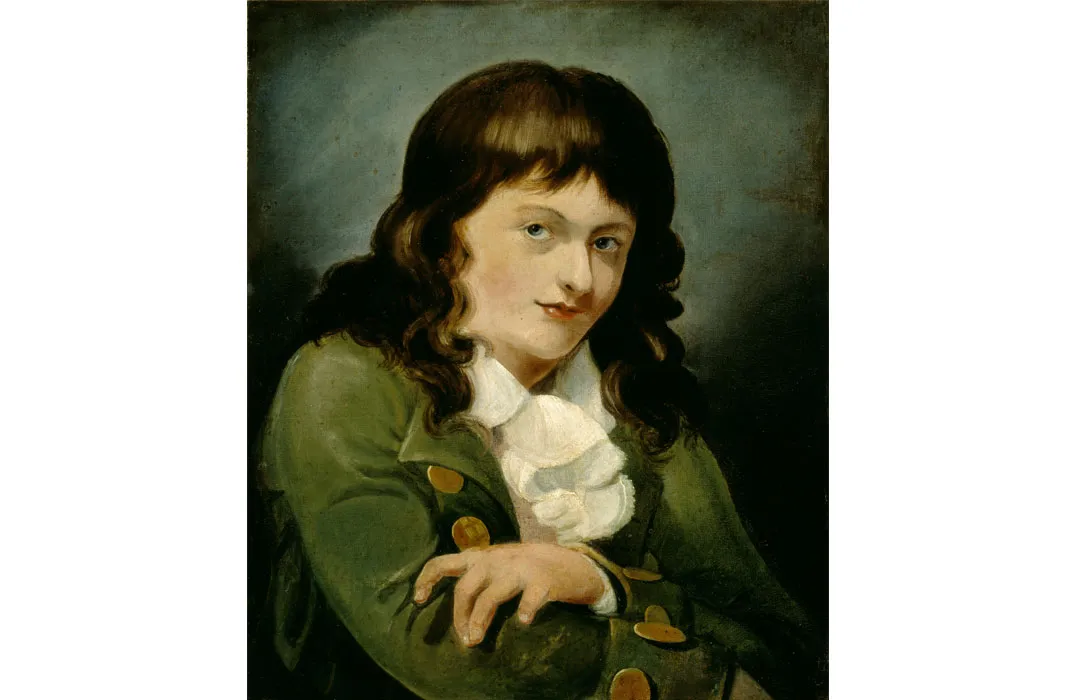
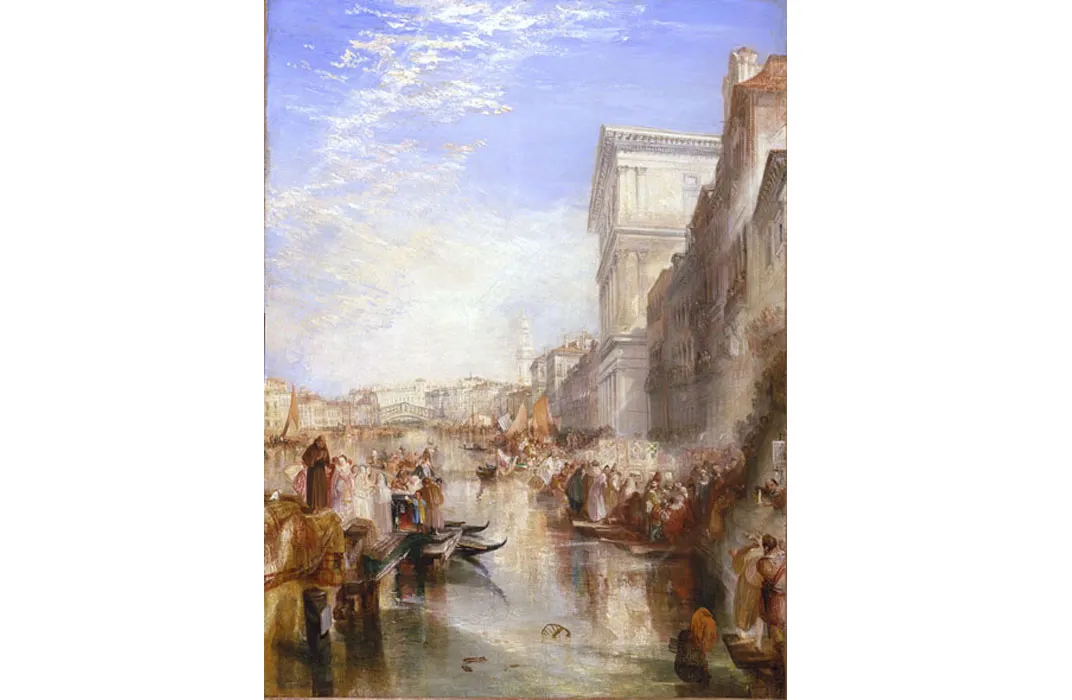
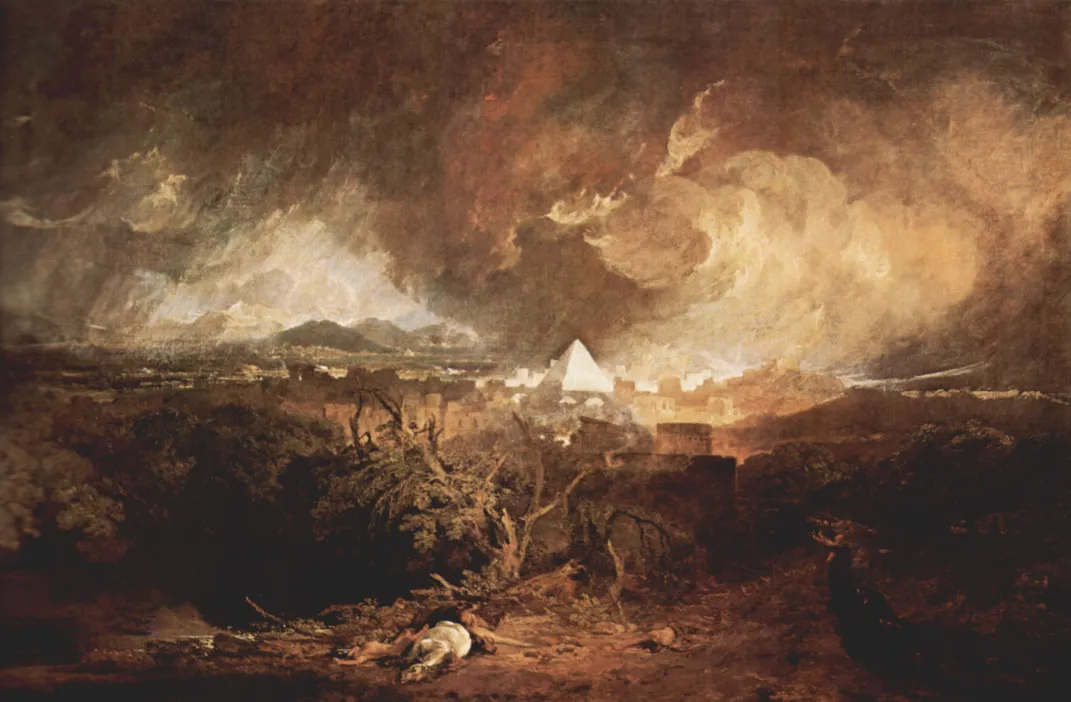
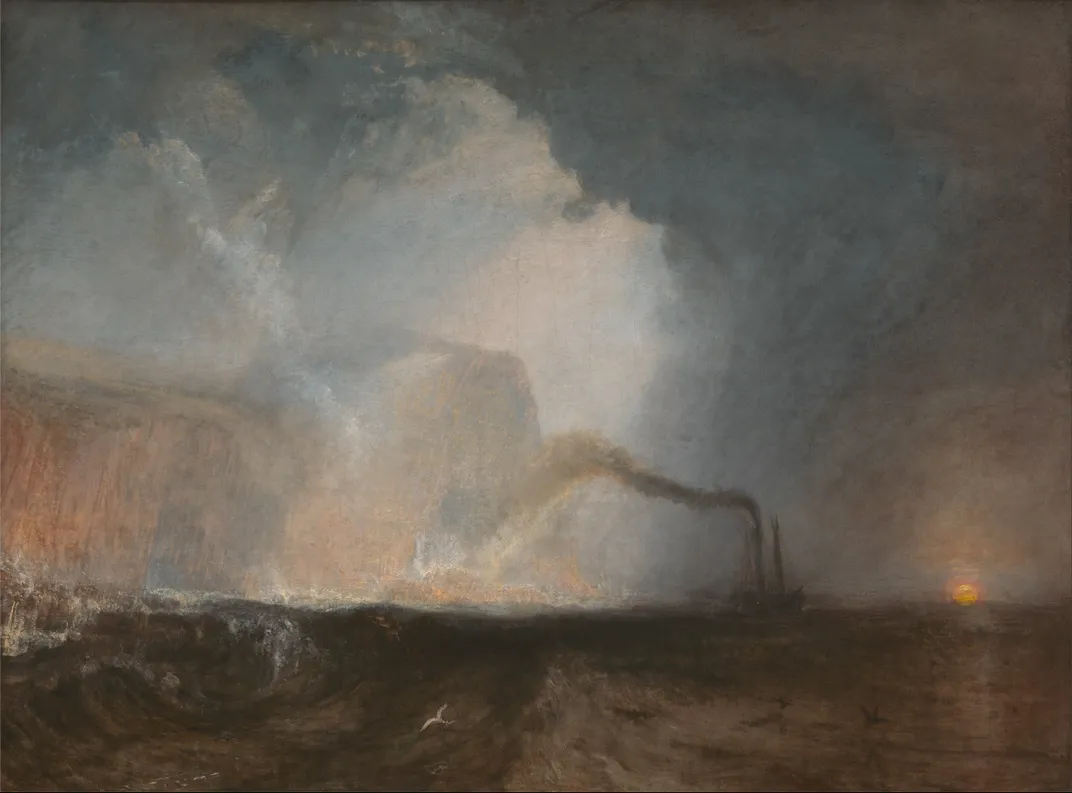
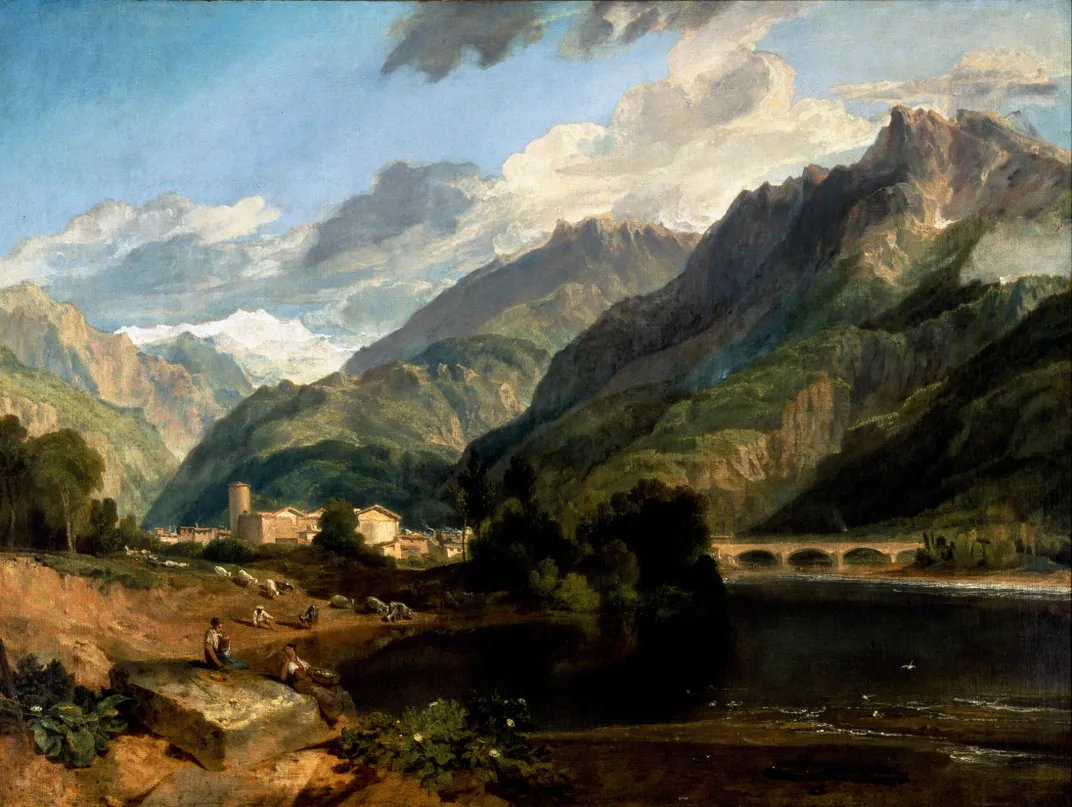


![MR. TURNER - OFFICIAL TRAILER [HD]](https://th-thumbnailer.cdn-si-edu.com/5nNeeI_YH-NTYdkyk8pYFq_UXJ4=/220x130/https://tf-cmsv2-smithsonianmag-media.s3.amazonaws.com/embedly/embedly_image_88f0883fcf80e253d3e67b4b2e04455535664760.jpg)